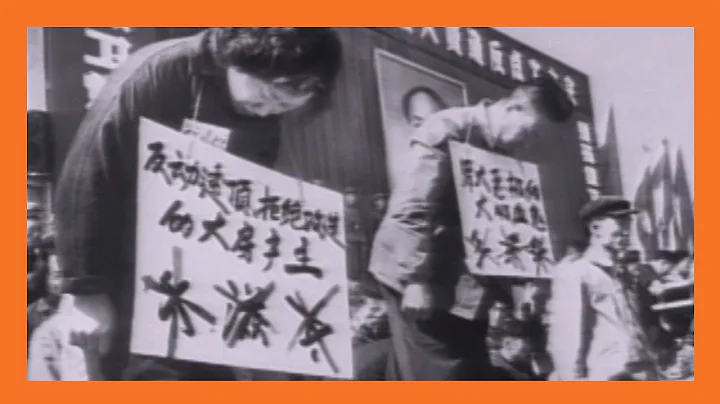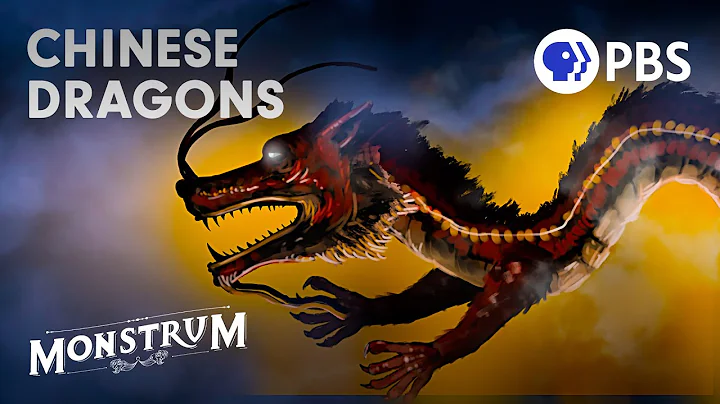article | Scavenger Talk
(This article is original by Scavenger Talk, welcome to reprint with signature!)

Looking at all the countries in the world, there is no place name in any country that has a very strong historical culture and cultural heritage like ours.
Do you think I’m boasting?
No, look at the major historical cities in our country. Many of their city names have thousands of years of history, and even the naming is very traditional Chinese culture. For example, Chang'an (Xi'an) means long-term peace and stability; Chongqing means double happiness; Dunhuang comes from the meaning of "Dun is great, Huang means prosperity"; Shangqiu comes from the former residence of the Shang people, etc.
In addition to these famous historical cities, the naming of other cities, counties and even towns in our country is very particular. Naturally, the names of the most commonly used and most common provinces are indispensable.

So today this article will break down how each province is obtained. The main ways to obtain it are divided into the following five types:
The first type: collectively known as Jiangsu, Fujian, Anhui, Gansu, and Sichuan
This third A kind of "collective name" is the merging of the names of the two major cities in the territory. Generally speaking, the provinces named in this way will not maintain their existing administrative area for a long time. Most of them are within a thousand years. .
Jiangsu: Many people already know the name of Jiangsu Province, which comes from its two largest cities-Nanjing and Suzhou. During the Qing Dynasty, Jiangsu Province was officially established, and at that time it was named Nanjing ( Jinling) and Suzhou each form one character "Jiangsu".

Fujian : The origin of Fujian's name is the same as Jiangsu above. It was also taken from the two largest cities in its territory at that time - Fuzhou and Jianzhou. The core of Jianzhou in ancient times is Jian'ou City in today's Nanping City: Anhui Province's origin and time belong to the same period as Jiangsu. At that time, Anhui and Jiangsu were still one. For some reasons. Consider dividing it into two, and Anhui is named after its "provincial capital" Anqing and its cultural core area Huizhou : Gansu : The origin of Gansu's name is rather tortuous, and it can generally be classified into this category. It is mainly the combined name of the two major cities in its territory - Ganzhou and Suzhou. Among them, ancient Ganzhou is located roughly in Zhangye, and ancient Suzhou is located in Jiuquan: Sichuan's naming is quite special. , unlike the above, where did the name Sichuan come from? In the Northern Song Dynasty, most of the current Sichuan Basin was divided into four roads, namely Yizhou Road, Zizhou Road , Lizhou Road and Kuizhou Road. Because these four roads were related to the earlier Sichuan-Shaanxi Road , they were collectively called the Sichuan-Shaanxi Four Roads, and were later simplified to Sichuan.
The second type: geographical location - Shandong, Shanxi, Guangdong, Guangxi, Henan, Hebei, Hunan, Hubei, Jiangxi, Hainan, Sichuan, Inner Mongolia
This naming is very interesting, and it is also a way for many people to quickly remember provinces The origin of the name is that the border geography is used as the name of the province. In order to facilitate understanding, the provinces where this pattern exists are combined and described below.
Shandong and Shanxi : The name of these two provinces comes from the Taihang Mountains . Shanxi is called Kuching. It calls itself Shanxi to the west of the Taihang Mountains, and Shandong to the east of the Taihang Mountains. One thing worth noting here is that Shandong in history was quite changeable and easy to confuse. During the Spring and Autumn Period, the State of Jin called Qilu Shandong. And because Qin State occupies Guanzhong , the six countries east of Huashan are often called Shandong Six Kingdoms . In some ancient Qin classics, the abbreviation "Shandong" often appears.

Guangdong and Guangxi : In the early Song Dynasty, Guangnan Road was re-established on the basis of the original Tang Dynasty Lingnan Road, and Guangnan Road was divided into east and west roads. The East Road Administration is located in Guangzhou, and the West Road Administration is located in Guilin. This is the origin of the name Guangdong and Guangxi . The "Guang" among them is " Guangxin " which comes from the pre-Qin place name.
Henan, Hebei : The origin of the names of these two provinces is actually very simple, they are derived from the Yellow River . Among them, Henan is named Henan because most of its area is south of the lower reaches of the Yellow River; most of Hebei is located to the north of the lower reaches of the Yellow River, so it is called Hebei.

Hunan, Hubei : The source of the province name of the two lakes also comes from rivers and lakes, and this lake is Dongting Lake. Hunan is named Hunan because most of it is located to the south of Dongting Lake. The same goes for Hubei, with most of it located to the north of Dongting Lake.
Jiangxi : The name Jiangxi comes from the west of Jiangnan, and Jiangnan refers to the south of the Yangtze River. So Jiangxi is actually the place south and west of the Yangtze River (generally refers to the middle and lower reaches).
Hainan: In fact, the division of Hainan is still relatively inaccurate, because the name of Hainan comes from Hainan Island, which should belong to the fourth category, but this Hainan Island also comes from the meaning of "Lonely South China Sea" , and is more inclined to the second type, so it is more appropriate to put it here.

Shaanxi: The origin of the name Shaanxi is very interesting. It comes from the west of the ancient Shaanxi Plain, and the ancient Shaanxi Plain is currently located in Shaanxian County, Henan Province.
Inner Mongolia : The origin of the name of Inner Mongolia seems to be different from that of the provinces above, because the names of the provinces above all have the location words of southeast, northwest, and Inner Mongolia has nothing to do with it at first glance. But putting Inner Mongolia here naturally makes sense.
The reason is that Inner Mongolia actually comes from the transliteration of Mongolian, and in Mongolian, "Mongolia" means "the sunny side of the mountain". This mountain is Yinshan . The sunny side of the mountain is generally used in ancient Chinese geography. It faces the south, so "Mongolia" means the south of Yinshan Mountain.
The third type: special meaning - Beijing, Tianjin, Chongqing, Tibet, Ningxia, Xinjiang, Yunnan
Beijing: The naming of Beijing is actually very simple. Beijing means capital, and Beijing is the northern capital. This is also a comparison. For Nanjing at that time.

Tianjin : The origin of Tianjin’s name is also related to the early days of and in the Ming Dynasty. Ming TaizongZhu Di went south from the Beijing-Hangzhou Grand Canal and set sail in Tianjin, so he named it "Tianjin" after "the ferry where the emperor passed".
Chongqing: The name of Chongqing has been explained above. It comes from Zhao Dun, Emperor Guangzong of the Song Dynasty. He was promoted to the throne by Queen Gong in a short time, so he specially named his fiefdomGongzhou as Chongqing. It means "double joy".
Tibet: The origin of the name Tibet is actually derived from the regional language, namely Tibetan. In Tibetan, "Tibet" means "holy", and because it is located in the western part of China, it is called Tibet, which means the holy place in the west of China.

Ningxia : Well, the name of Ningxia does not come from "quiet summer, starry sky", but from Yuan Dynasty . At that time, the Yuan Dynasty destroyed Xixia and obtained today's Ningxia and other places, so they renamed this place "Ningxia", which means to pacify Xixia and make Xixia peaceful.
Xinjiang : The origin of Xinjiang’s name also has special festive sustenance. In the middle and early Qing Dynasty, Qianlong quelled the Junggar rebellion in the west and regained the captured land. To commemorate and celebrate, he nominated "Xinjiang" for this place, which means "new return to the homeland."
Yunnan : The origin of the name Yunnan is quite legendary. In the middle of the Tang Dynasty, the Kaiyuan era of ushered in. The strong national power made the surrounding small countries willing to regard it as the sovereign state of and come to visit it. At that time, Nanzhao King Luo Feng, who occupied Yunnan, also sent an envoy to meet the Tang Emperor. The emperor of the Tang Dynasty asked the envoy, where is the Nanzhao ? The messenger replied: The clouds are under the sky in the south.

Since then, Yunnan has become the name of this land.
The fourth type: internal scenery - Zhejiang, Macao, Liaoning, Jilin, Guizhou, Qinghai, Heilongjiang
The naming of provinces in this category is also very easy to understand, as they all come from certain mountains, rivers and lakes within their territory.
Zhejiang : The most famous river in Zhejiang is the Qiantang River. The Qiantang River was also called the river because of its twists and turns. Later, it was passed down and became Zhejiang and Zhejiang.
Macau : The name Macau comes from Aonan. "Ao" in Chinese originally meant a depression on the river coast, and later it became a boat parking place. Aonan is named after the hub where ships stop. In addition, the geography of Macau is surrounded by mountains, and the sea water passes through it, forming a natural "ten", so it is called the cross gate, and the name Macau was also developed.

Liaoning: The "Liao" in Liaoning comes from the Liaohe River here. During the Republic of China, it was named "Liaoning" in the hope of "everlasting peace in the Liaohe River Basin". This one is a bit biased towards the third category, but because the Liaohe River is the main presence, it is ranked in the fourth category.
Jilin : The name Jilin comes from Manchu , and the original full name was "Jilin Wula". Among them, "Jilin" means "along" and "Wula" means "river". Jilin Wula means the place along the river, and it is along the Songhua River. Later it was omitted to Jilin.
Guizhou : The name of Guizhou is related to Guishan in its territory. Its provincial capital, Guiyang, also comes from Guishan. "The Yang of Guishan" means it is to the south of Guishan.
Qinghai : Qinghai is very simple, that is, it comes from Qinghai Lake .

Heilongjiang : Heilongjiang is named after the river, and this river is Heilongjiang. As for why it is called Heilongjiang, that requires a separate article.
The fifth type: Characteristic habits - Shanghai, Hong Kong, Taiwan
Shanghai : The abbreviation of Shanghai is "Hu", which evolved from the fishing tool "Hu". At that time, fishing in Shanghai was called "Shanghai". Later, because it lived on the seashore, it was named Shanghai. (From "Hongzhi Shanghai Chronicle")
Hong Kong : The origin of Hong Kong's name is related to spices. During the Ming Dynasty, the official trade in spices with Southeast Asia was mainly to transfer spices from the southern Guangdong region to Hong Kong and then sell them to Southeast Asia. So the place was named after "the port where spices are stored and turned around".
Taiwan : The naming of Taiwan Province is relatively controversial. The current mainstream belief is that it comes from the name "Taiwo Bay" of the Siraya tribe, Taiwan's early aborigines, which means coastal land. Later, its name was gradually used.

The above are the main sources of naming for the thirty-four provincial administrative regions in my country. The data search involves many county annals, and there may be omissions and errors. Readers who have researched or are interested in this can also make corrections in the comment area. At the same time, I also hope that more and more people are willing to get in touch with our country’s traditional history and culture from these aspects, which is more worthy than likes.





















